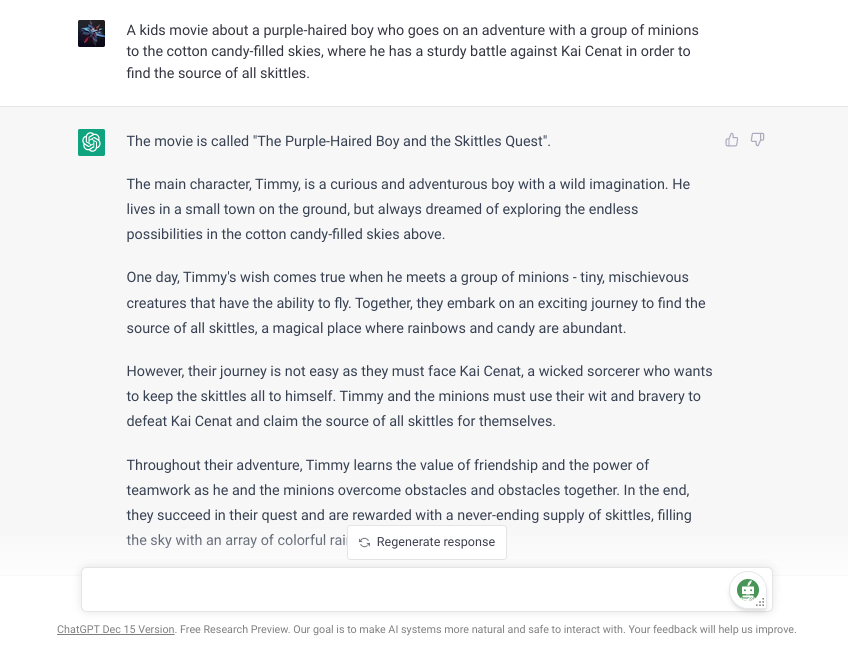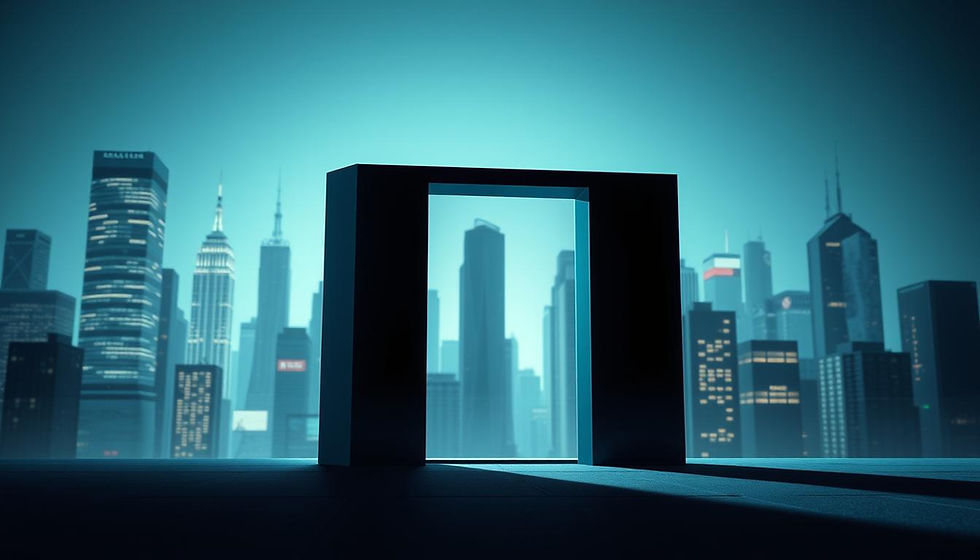AI-Generated Media: The Good and the Bad
- Jomi Fashina

- Dec 24, 2022
- 2 min read
Made with Lensa AI

Story
Over the past few months, the conversation around AI and how we can prepare ourselves for this expected future has grown larger and larger. This growth was mainly fueled by the explosion of publicly available AI art programmes and the rise of OpenAI’s ChatGPT and DALL E 2.
AI-generated art, ChatGPT, DALL-E 2 and other forms of AI programmes all fall under the umbrella of AI intelligence creating a form of media using only images/text input by the user. Essentially, the AI programme makes the form of media it was made to create, often based on a prompt given by the user.
Made with OpenAI's ChatGPT

My Take
I think that one of the reasons AI programmes like these have become so popular recently is because of how easily accessible they are. Not only AI but also AR/VR experiences have traditionally had the “brick wall” of price limiting consumers’ access. The only difference is this time, the majority of these AI platforms that have recently blown up are cheaper to experience than usual and are publicly available.
Although still in its early stages, this represents a significant advance in AI intelligence. However, many people worry that programmes like these, which essentially spit out finished media from prompts and sources all over the internet, may result in a large number of creatives (whose works are available online) going uncredited for their work. This point is valid as many artists whose design ideas/choices have contributed to what the final AI-generated media looks like have yet to be credited for their work. Whether or not you credit an artist is not black and white, and is more of a gradient. However, there is evidence that artists' works were employed in the creation of the final AI image since certain AI-generated images have been found to include the artist's signature, which would typically be seen on their paintings or sketches.

On the other side of the spectrum, this leap in AI intelligence can be a route by which creatives can be inspired on what their next piece of work would be based. Using what the AI intelligence creates as a starting point/muse, rather than just copying whatever is created. As I’ve mentioned before, the tech space and many tech companies are beginning to transition their products, otherwise centred around mobile devices, to commodities that can be translated to the AR/VR realm (which has a close link to AI). Therefore, as AI intelligence inevitably improves, the closer we’ll be to a world run by AR/VR technology, the same way the world we live in today revolves around our mobile devices.
%20-%20Used%20for%20Marketing%20Purposes%20.webp)





Comments